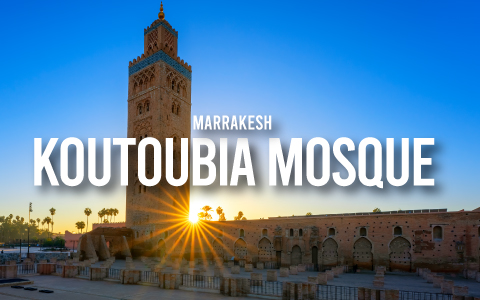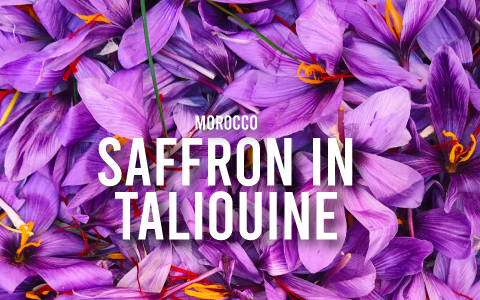
Koutoubia Mosque: A Timeless Beacon Of Faith And Architecture In Marrakesh
Marrakesh, a city that seamlessly weaves together history, culture, and spirituality, is home to a breathtaking architectural marvel—the Koutoubia Mosque. Standing tall with its intricate details and commanding presence, the mosque is not only a symbol of religious significance but also a testament to the rich heritage of Morocco.
Together with the Saadian Tombs and Jardin Majorelle, this building is one of the things to see while in town.
The Historical Roots of Koutoubia Mosque
Standing proudly against the backdrop of the Atlas Mountains, the Koutoubia Mosque, also known as Kutubiyya Mosque, boasts a history that dates back to the late 12th century.
Commissioned by the Almohad Caliph Yaqub al-Mansur, its construction began in 1150 and was completed in 1199. The name “Koutoubia” is derived from the Arabic word “kutub,” meaning books, as the mosque was surrounded by bookshops and scholars’ stalls in its early days.
The mosque is renowned for its iconic minaret, which reaches a height of 77 meters (253 feet) and dominates the skyline of Marrakesh. The minaret is adorned with intricate geometric patterns, decorative arches, and Kufic calligraphy, showcasing the exquisite craftsmanship of the past.
One of the distinctive features of the Koutoubia Mosque is its use of traditional materials, such as red sandstone and brick, which contribute to its warm, reddish hue. The mosque’s prayer hall is equally impressive, characterized by horseshoe arches, ornate stucco work, and a serene courtyard.
Visitors are often captivated by the tranquil atmosphere that permeates the mosque, inviting them to reflect on the centuries of worship that have taken place within its sacred walls.
The Mosque Preservation Efforts
While the Koutoubia Mosque has stood the test of time, it has undergone several renovations and preservation efforts to ensure its longevity. Over the centuries, various rulers and dynasties have contributed to the mosque’s maintenance and restoration, preserving its architectural integrity and cultural significance.
In recent years, there has been increased recognition of the importance of safeguarding Morocco’s architectural heritage. Government initiatives and international partnerships have played a crucial role in the ongoing restoration projects aimed at preserving the Koutoubia Mosque for future generations.
The Cultural Significance Koutoubia Mosque
Beyond its architectural grandeur, the Koutoubia Mosque holds profound cultural and religious significance for the people of Marrakesh and Morocco as a whole. As the largest mosque in Marrakesh, it serves as a focal point for the Muslim community, hosting Friday prayers and religious ceremonies that bring people together in communal worship.
The mosque’s strategic location in the heart of the city also makes it a central point for navigation and orientation. Its towering minaret has been a guiding landmark for travelers and traders for centuries, and it continues to be a symbol of unity and faith in contemporary Marrakesh.
Visitors to the Koutoubia Mosque can witness the vibrant blend of cultures that has shaped Morocco throughout its history. The mosque’s surroundings, once bustling with book vendors and scholars, now offer a glimpse into the city’s lively atmosphere, where traditional markets, or souks, showcase local crafts, spices, and textiles.
In conclusion, the Koutoubia Mosque stands as a timeless testament to the convergence of faith, history, and artistry in the heart of Marrakesh. That is what makes it a must-visit destination for travelers seeking to immerse themselves in the rich tapestry of Moroccan heritage.
As the sun sets over the city, casting a warm glow on the reddish hues of the mosque, you can’t help but feel a profound sense of awe and reverence for this enduring symbol of spirituality and architectural brilliance.



